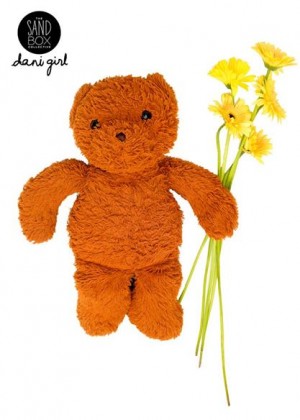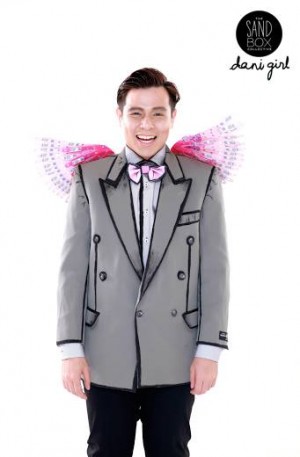I tend to veer away from stories that are out to clutch your heart, and then measure success by how much you bawl while watching.
Elsewhere in the world texts like these are criticized for displaying sickness and passing it off as artistic work, or using a particular claim to an ailment and then celebrating the work as “new” or innovative.
And so I could but be skeptical about Dani Girl, as I came in to see it on its last weekend, knowing full well what it was going to be about.
But Dani Girl surprised. Not that it didn’t tug at heartstrings and had me crying like a mother who knows of sick daughters. And yes it was about this staging and these actors, but also and ultimately it was about the material itself.
The well-told story
My beef with narratives that begin with tragedy such as terminal illness is that it can and does fall into the trap of the easy: a little girl is sick, what other story is there to tell other than what we know already – or which most every other soap opera has told us?
But Dani Girl is not about cancer. It is about a little girl whose imagination allows her to think up a world that is totally extraneous, even when bound, to this one where she is sick and uncertain about what’s going on in her body.
Which is why the moments in the real world of sickness are few and far between here. It is not really the sick body that Dani Girl treats the audience to. Instead it reveals how it is the spirit of this girl as bound to her ability at storytelling that is the more unique story that needs to be told. This is not about a girl with cancer. It’s about a girl transforming her world the only way she knows how, and embracing her truth like few adults can.
The truth being that her world is hers to create and imagine and understand.
Dani Girl tells us the value of the story, by showing us a girl who lives for it, survives as long as she can because of it. Which is to say of course that she dies in the end.
The power of this play is that this is barely the point.
The fantasy that is real
It would be easy to imagine that this girl’s imagination is nothing extraordinary: at that age we know of the imagination’s power to make us believe in what we need to. But the imagination here is not something that’s out of control, nor is it something that’s merely used as an excuse to bring in the happiness as alternative to the sadness on stage.
This imagination is about a little girl with the ability to not just tell her story but to use it to reconfigure her present, one that is painful and difficult, and incomprehensible. It is the latter that is at the heart of her storytelling, the question why is cancer? ringing through her head.
And throughout most this production as well. Dani’s storytelling is unique because the fiction she creates is filled with intertext: of going up to space, of meeting up with a drug dealer, of saying goodbye to another toy that has yet again died of a rare cancer. Even her father’s absence is rationalized in Dani’s head via her dreams, and the idea of a fairytale undone. Meeting Marty only makes the imagination larger with his own intertext of movies and superheroes, interweaving with that of Dani’s.
And this is really what works about this material, it is what keeps it from being a bawl-fest, as it is what good fantasies are made of: they make us imagine the real and imagined to be on the same plane, because both spaces speak of the crises that is in front of us, as it reminds that this crisis is ours, too. The familiarity of Dani’s and Marty’s fantasies remind of our oneness with them and their struggle; the childlike innocence that is interwoven with the seriousness of the ailment they do not understand, is our own crisis as audience. We wish we knew to explain cancer.
I wished I had the words.
In retrospect
Which was difficult to come by, ergo this late review. Dani Girl is a challenge to talk about not because of the material per se, but because the easy route would’ve been to merely talk about it on that superficial level of what it sought to do, what it ended up doing, how it made us feel. But that would be an injustice to the layers of this story, all deliberately told, no part of it out of place, nor out of sync. The former is the value of this material’s writing. The latter is really about this staging.
The simplicity of the stage is offset by a play with mirrors and lights; the slope that leads from upstage to downstage revealing a seamless shift between what’s real and fantastic. Save for the unwieldy huge monster that is the climax to Dani’s nightmares, there was nothing here that seemed out of sync. But that is really to speak of the actors here.

Mitzi Lao as Dani was a joy to watch, and a welcome respite from the over-acting, over-work-shopped kids we see performing beyond their age. Here Lao is able to balance the innocence with a bravery that is part naiveté, part strength of spirit. Luigi Quesada’s Marty is just as enjoyable, albeit a tad bit feminine in parts. As the young boy who deals with his ailment via the intertext of superhero and adventure films, Quesada believably moves from innocence to daring without missing a beat. Shiela Valderrama as the mother of Dani is also wonderful to watch here, working into this difficult motherhood that balance between taking-the-bull-by-the-horns, and utter and total surrender.
But it is Reb Atadero as Raph, the life in Dani’s imagined world, who is the most wondrous thing to watch onstage. This is no surprise really as Atadero might be the most underrated actor this side of English theater; but what surprised was his litheness and lightness in this role, the weight in his step that stood for the fearsome and scary in him, too. Because Raf had to be everything that Dani imagines, including the scary and unfathomable, cancer and missing father included, and Atadero was all that and a host of about 10 other character really – from the seatmate in school to the Latino drug dealer to game show host, guardian Angel to the omniscient voice.
Along with a story – and music! – that spoke of crisis without merely tugging at heartstrings, and which had the balls to laugh and speak of the absurd in the imagination in the face of terminal illness, this cast made Dani Girl one of the more memorable shows this side of theater extravaganzas. That a new theater company like Sandbox Collective would be the ones to take this material on is no surprise, given local cultural production that’s predisposed to go for the cookie-cutter, sure-fire hits.
Of course that Sandbox Collective decides to introduce itself via this material not only speaks of its daring, it also places it squarely in that space of small and independent companies, the few who are doing it right.
Dani Girl’s music is by Michael Kooman, and book and lyrics by Christopher Dimond. The Manila production was directed by Toff de Venecia, who is also artistic director of Sandbox Collective. Set design by Faust Peneyra, lighting design by Meliton Roxas Jr., musical direction by Ejay Yatco.



